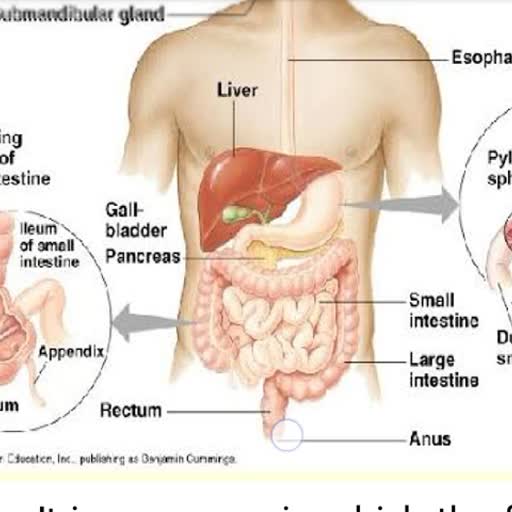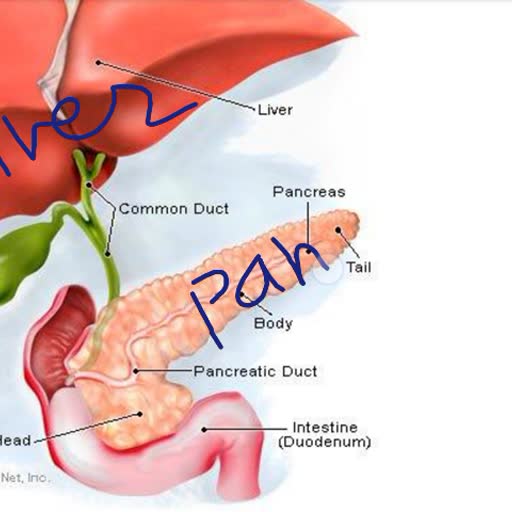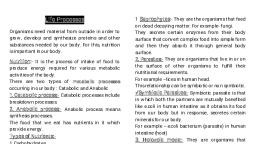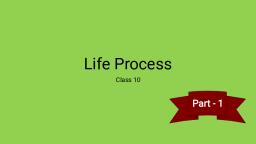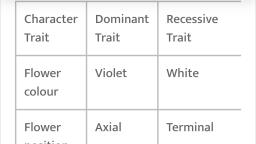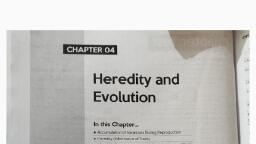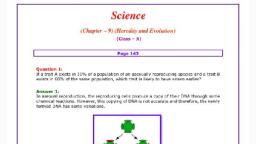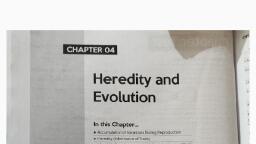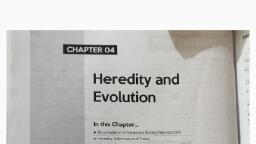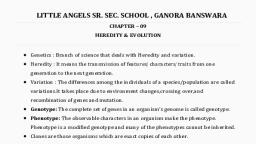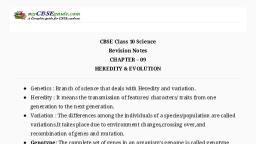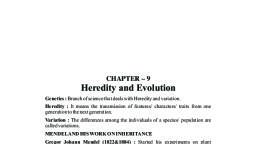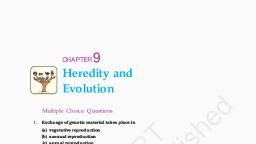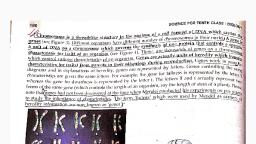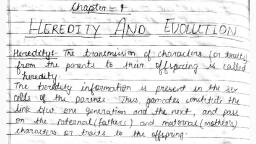Page 1 :
HEREDITY, AND, EVOLUTION, , Part -1, , By Sonu Classes
Page 2 :
Characters or Traits :, A recognizable feature of a human being (or any other organism)like, height, complexion, shape of nose and chin, colour of eye and hair etc, are called characters or traits., , Heredity :, The transmission of traits from the parents to their offspring is alled, heredity., , , The hereditary information is present in the gametes of the parents., Thus, gametes constitute the link between one generation and the, next, and pass on the maternal and paternal characters ortraits to the, offspring.
Page 3 :
VARIATIONS, :The differences between the characters or traits among the individuals of the, same species are called variations., The offspring is never a true copy of the parent., , There are many kinds of variations in human species like:1. Free and attached earlobes., 2. Different complexions ( Dark, Light brown, Dusky, Wheatish, Fair etc.), 3. Different eye colour (Brown, Hazel, Blue, Green, Grey, Amber etc), 4. Height ( tall o short), 5. Chin (cleft or pointed), 6. Hair colour ( Black, Brown, Blonde, Red, Golden etc.), 7. Hair type ( curly, wavy, Straight etc.), 8. Nose ( Snub, Thin, Pointed etc.),
Page 5 :
ACCUMULATION OF VARIATIONS :, , , When organisms reproduce, the off springs show minor variations due to, inaccuracies in DNA copying., , , , These variations are less in asexual reproduction and more in sexual, reproduction., , , , The variations in a species have no equal chances of surviving in the, environment., , , , Some variations are useful variations and they help the organism to adjust to the, changes in the environment. Some variations do not help the organism to adjust, to the changes in the environment and they may die and become extinct., , , , Selection of variants by environmental factor is basis of evolution., , , , A child bears all the basic features of human beings. However, it does not look, exactly like its parents., , , , Human population show a great variation. E.g. Variation in ear lobes., , , , Most of the individuals have free ear lobes (dominant trait) and some have, attached ear lobes (recessive trait).
Page 6 :
Rules for the inheritance of trait : Mendel’s Contributions, , , Father and mother contribute equal amounts of genetic material to the child., i.e., each trait is influenced by paternal and maternal DNA. Thus, for each, trait there will be two versions in each child., , , , Gregor Johann Mendel (1822-1884) worked out the main rules of such, inheritance., , , , Mendel used several contrasting visible characters of garden peas. E.g., Round/wrinkled seeds, tall/short plants, white/violet flowers etc.
Page 7 :
, , He crossed a tall plant and a short plant. In, first generation (F1 progeny) allplants were, tal. There were no halfway characteristics, (no medium-height plants). i.e., only one, parental trait (tall) was expressed. The, expressed trait is called Dominant. The, suppressed trait is called Recessive., , , , The second-generation (F2) progeny was, 75% tall and one quarter (25%) short. This, indicates that both traits (tall and short), were inherited in the F1 plants, but only, the tallness trait was expressed. Thus he, proposed that two copies of factor (now, called genes) control traits in sexually, reproducing organism. They may be, identical or different, based on the, parentage.
Page 8 :
, , To confirm genotypic ratio, each F2, plants are crossed with a pure, recessive(t) variety. It is called Test, cross., , , , TT & Tt are tall plants, while tt is a, short plant. It means a single copy of ‘T’, can make the plant tall (dominant trait),, but two copies of 't’ (tt) is needed to, get short plant (recessive trait).
Page 9 :
Cross of coloured flowered and white, flowered plants, , , Here, F1 produced all coloured flower. So, it is dominant trait and white flower is, recessive., , , , F2 produced coloured flowered plants and, white flowered plants in 3:1 ratio.
Page 10 :
Cross between pea plants showing two different, characteristics, , , When a tall plant with round seeds and a short plant, with wrinkled-seeds is crossed, the F1 progenies will, be tall and round seeded.i.e, tallness and round, seeds are dominant traits., , , , If the F1 progeny undergo self-pollination, the, following types of F2 progeny are produced:
Page 11 :
, , New combinations are formed due to, independent inheritance of tall/short trait, and round seed/wrinkled seed trait., , , , Similarly, formation of new combinations of, traits in F2 when factors controlling for, seed shape and seed colour recombine to, form zygote leading to form F2 offspring.
Page 12 :
How do these Traits gets Expressed, , , DNA is the information source to make proteins in a cell., , , , A section of DNA that provides information for one protein is called the gene, for that protein., , , , Genes control traits producing proteins. E.g. Plant height depends on a, growth hormone. It is synthesised due to an enzyme (protein). This enzyme, is synthesised due to a gene.
Page 14 :
, , According to Mendelian experiments, both parents contribute DNA equally, (copies of same genes) to the progeny. Thus each pea plant inherits 2 sets of all, genes. For this, each germ cell must have only one gene set., , , , In Mendel’s experiment, the characteristics ‘R’ and ‘Y’ independently inherited, because they are not linked. This indicates that each gene set is not in a single, DNA thread (i.e., not in a whole gene set), but in separate independent pieces,, each called a chromosome., , , , Thus, each cell has two copies of each chromosome, one each from male, (paternal) & female (maternal) parents. Every germ cell akes one chromosome, (maternal or paternal)., , , , When two germ cells combine, they restore the normal chromosome number in, the progeny. It ensures the stability of DNA of the species. Such a mechanism of, inheritance is used by all sexually reproducing organisms. Asexually reproducing, organisms also follow similar rules of inheritance.
Page 16 :
Sex Determination, , , , , , , , , , , There are different strategies for sex determination., Some species rely entirely on environmental cues. E.g. In a few reptiles, the, temperature at which fertilised eggs are kept determines whether they become, male or female., In animals such as snails, individuals can change sex. It indicates that their sex, is not genetically determined., In human beings, the sex is genetically determined. The genes inherited from, parents decide whether an individual be boy or girl., All human chromosomes are not paired. Most human chromosomes have a, maternal and a paternal copy, and have 22 such pairs. But one pair (sex, chromosomes) is not always a perfect pair. Women have a perfect pair called, XX.girl men have a mismatched pair. i.e., a normal sized X and a short Y, chromosome (XY)., Half the children will be boys and half will be girls., All children inherit an X chromosome from their mother.
